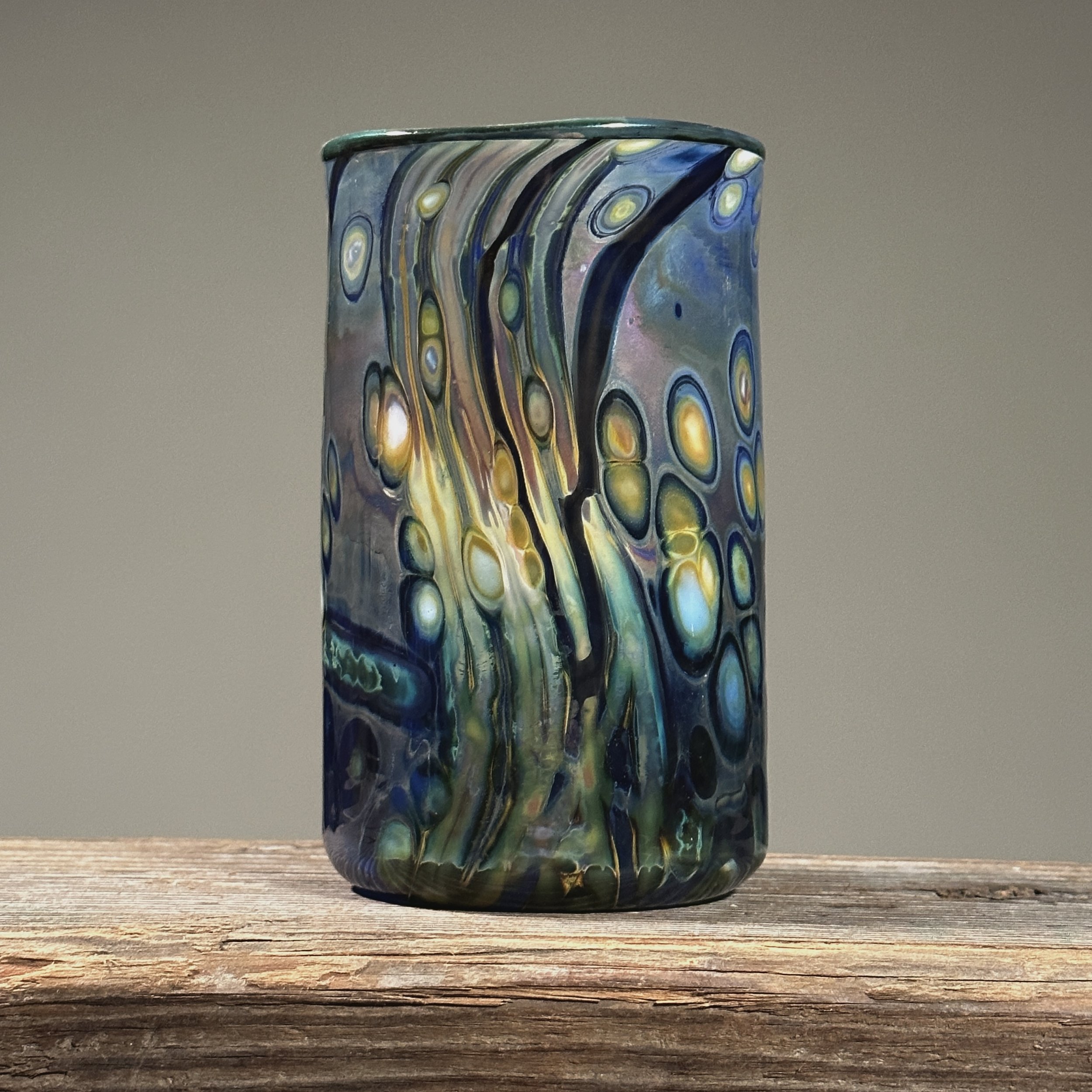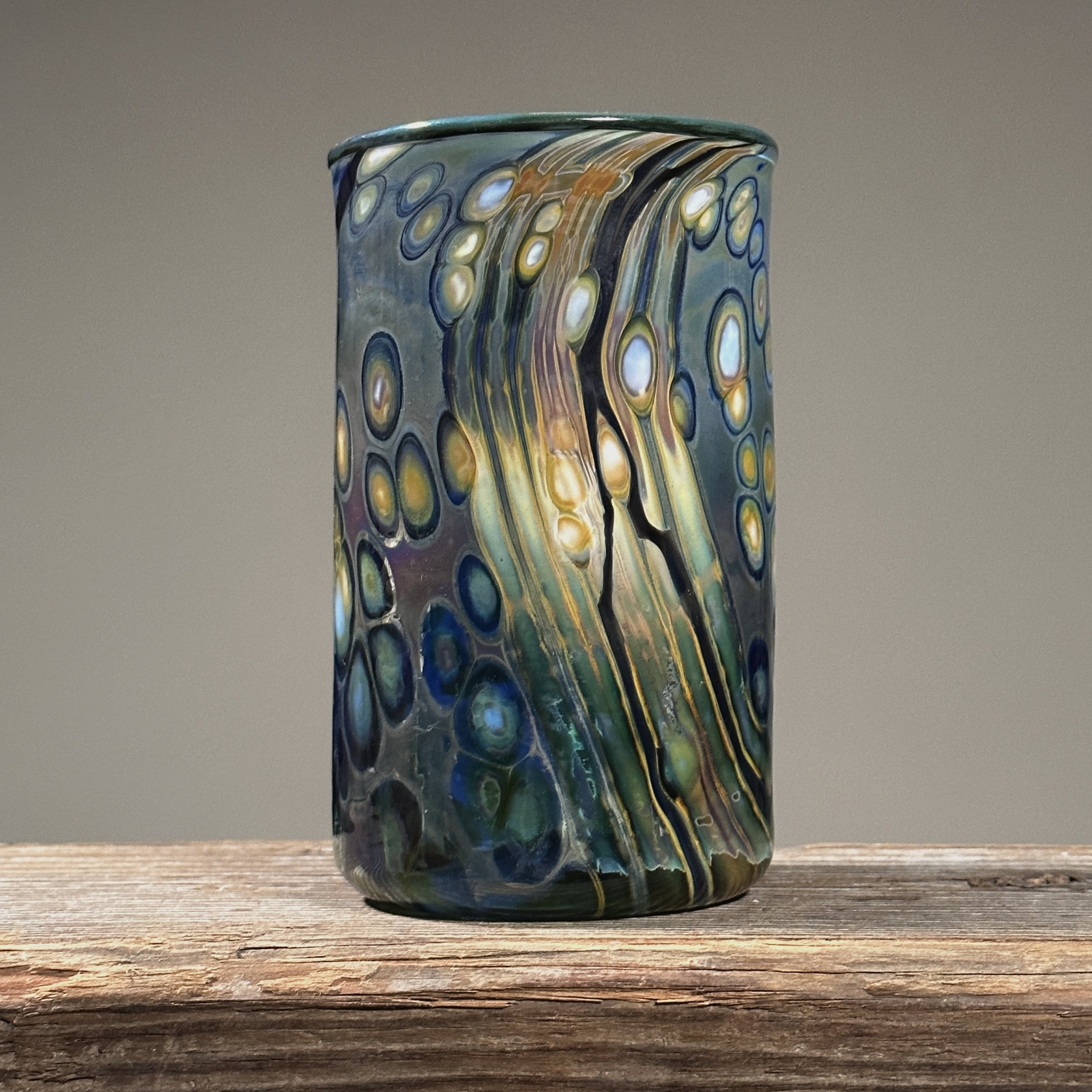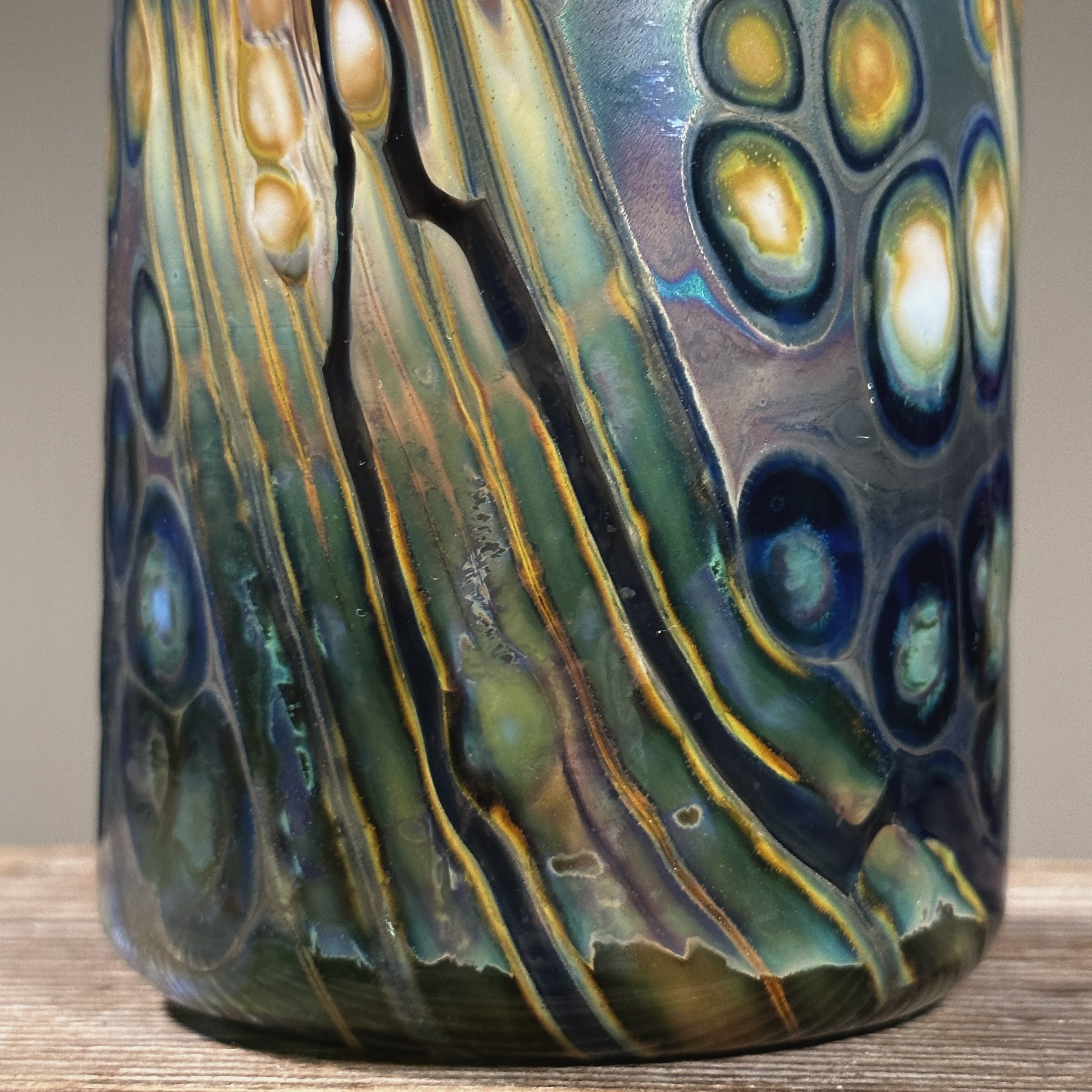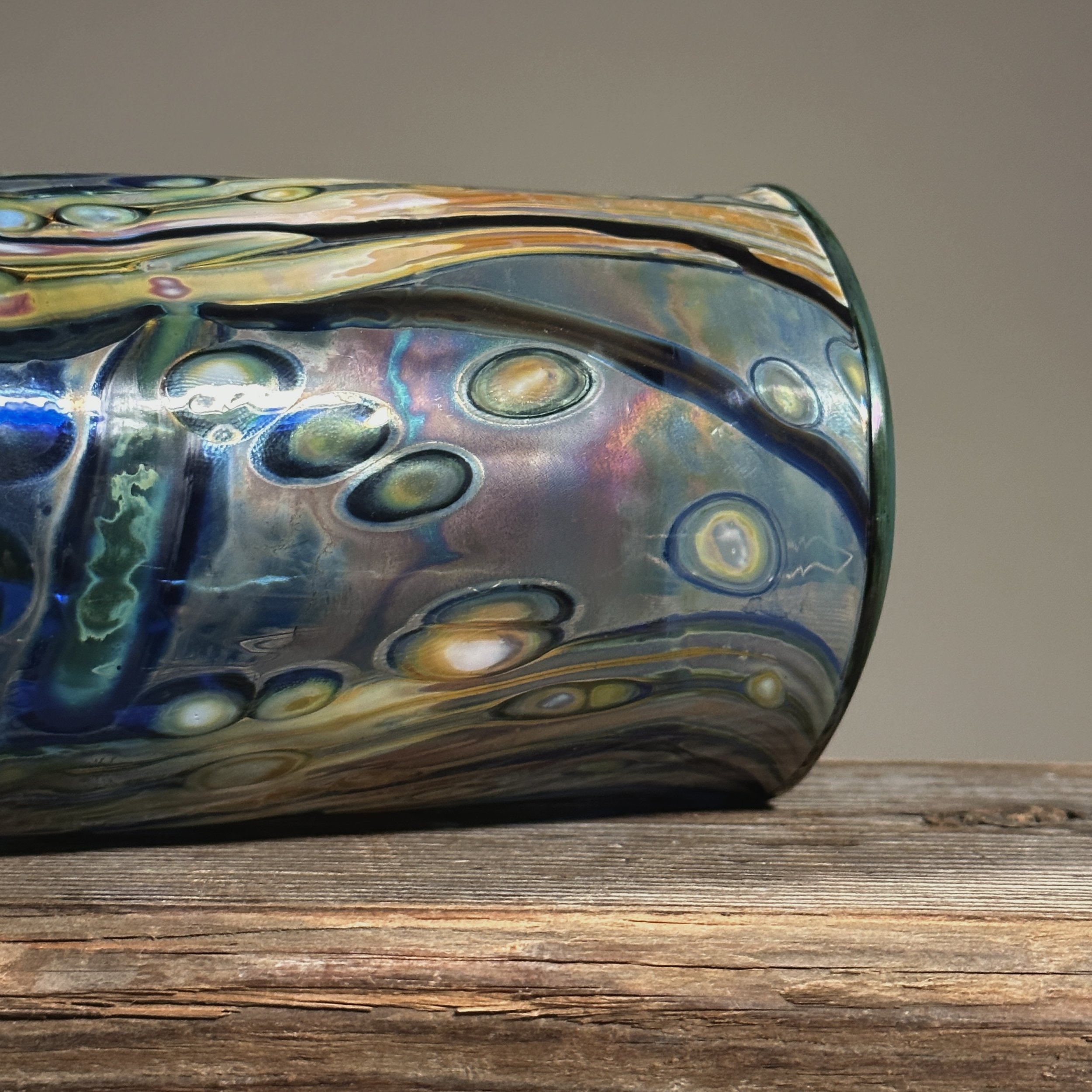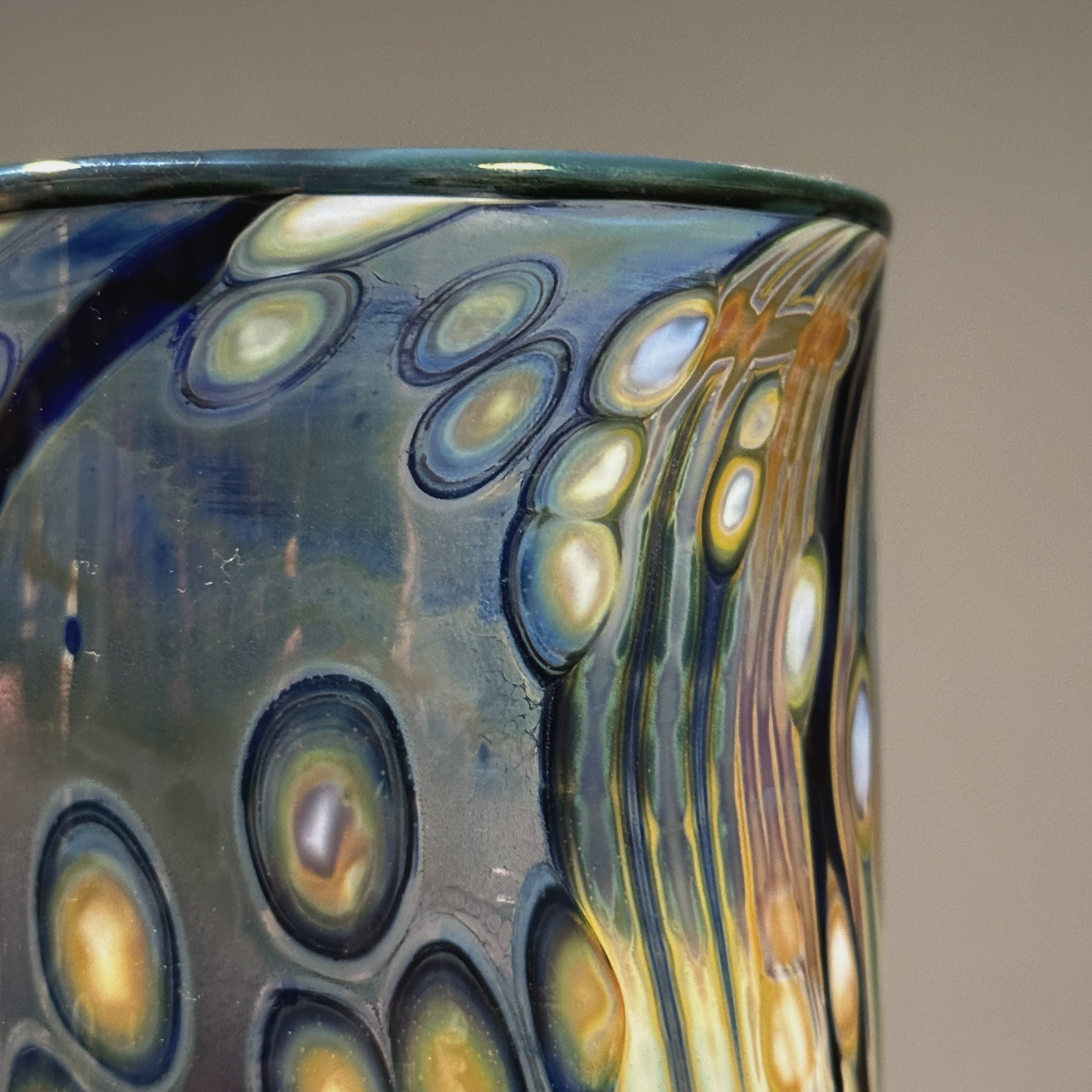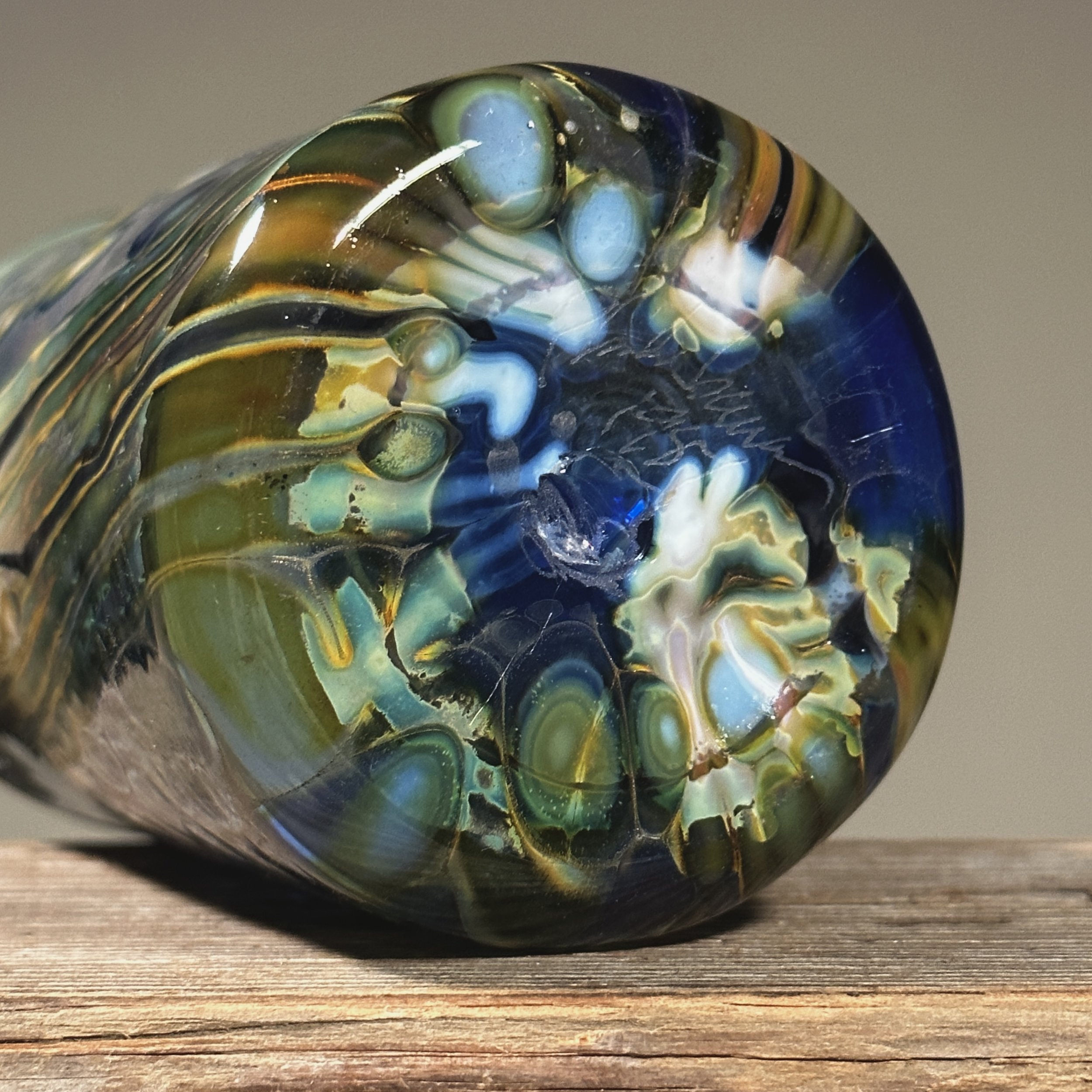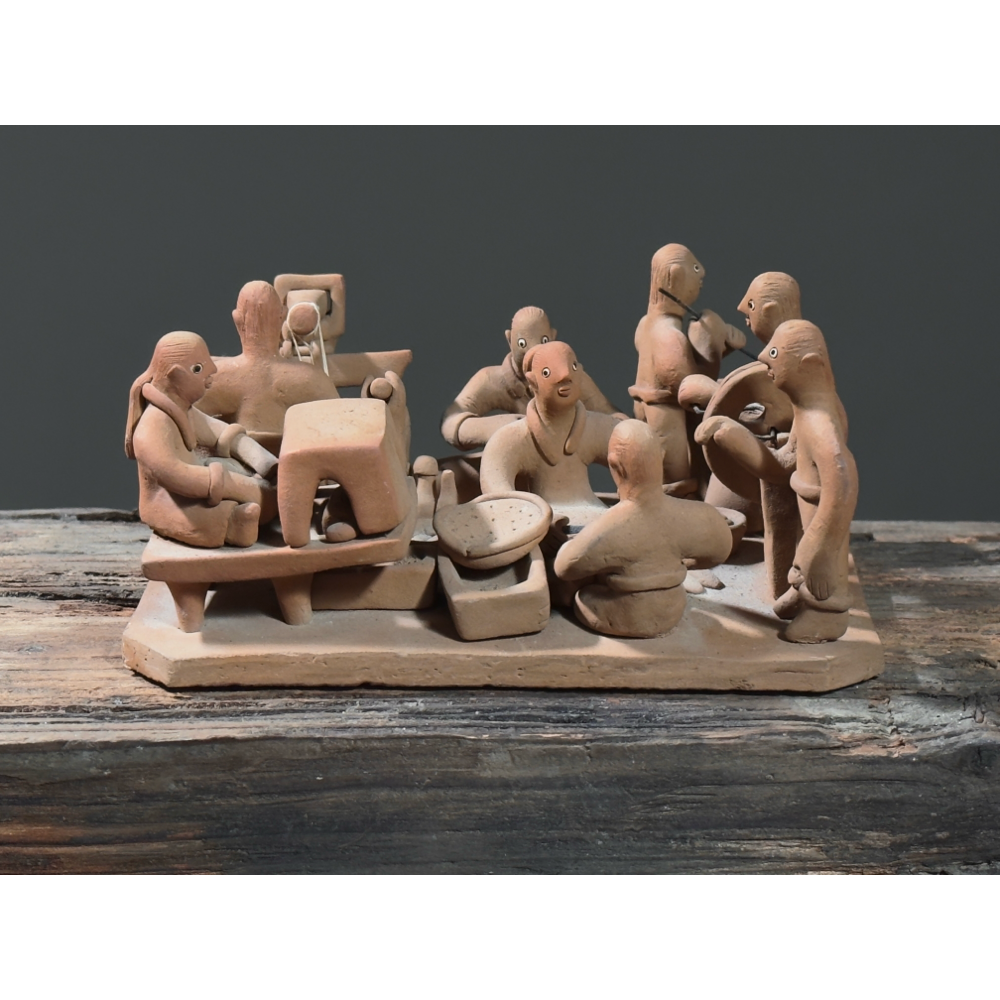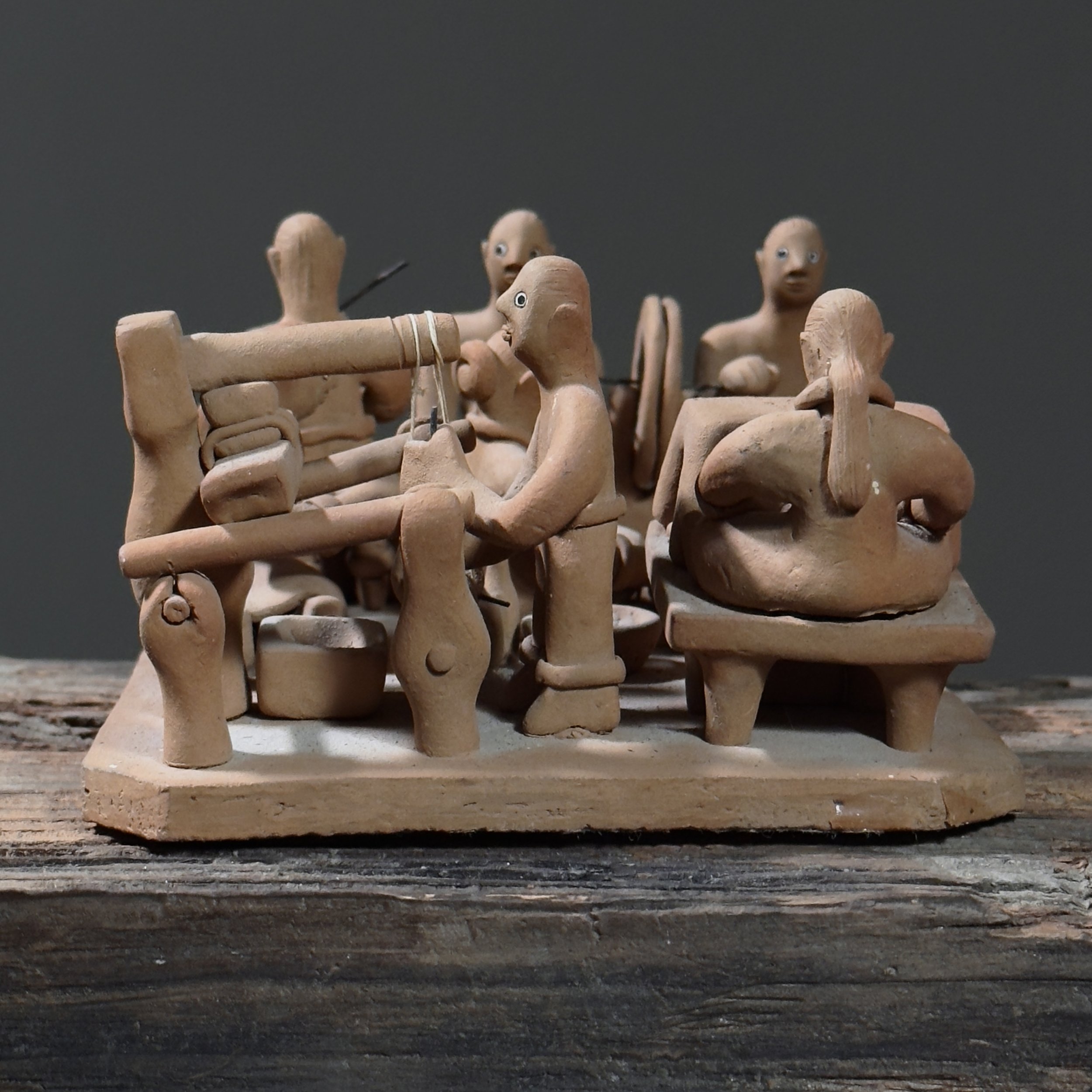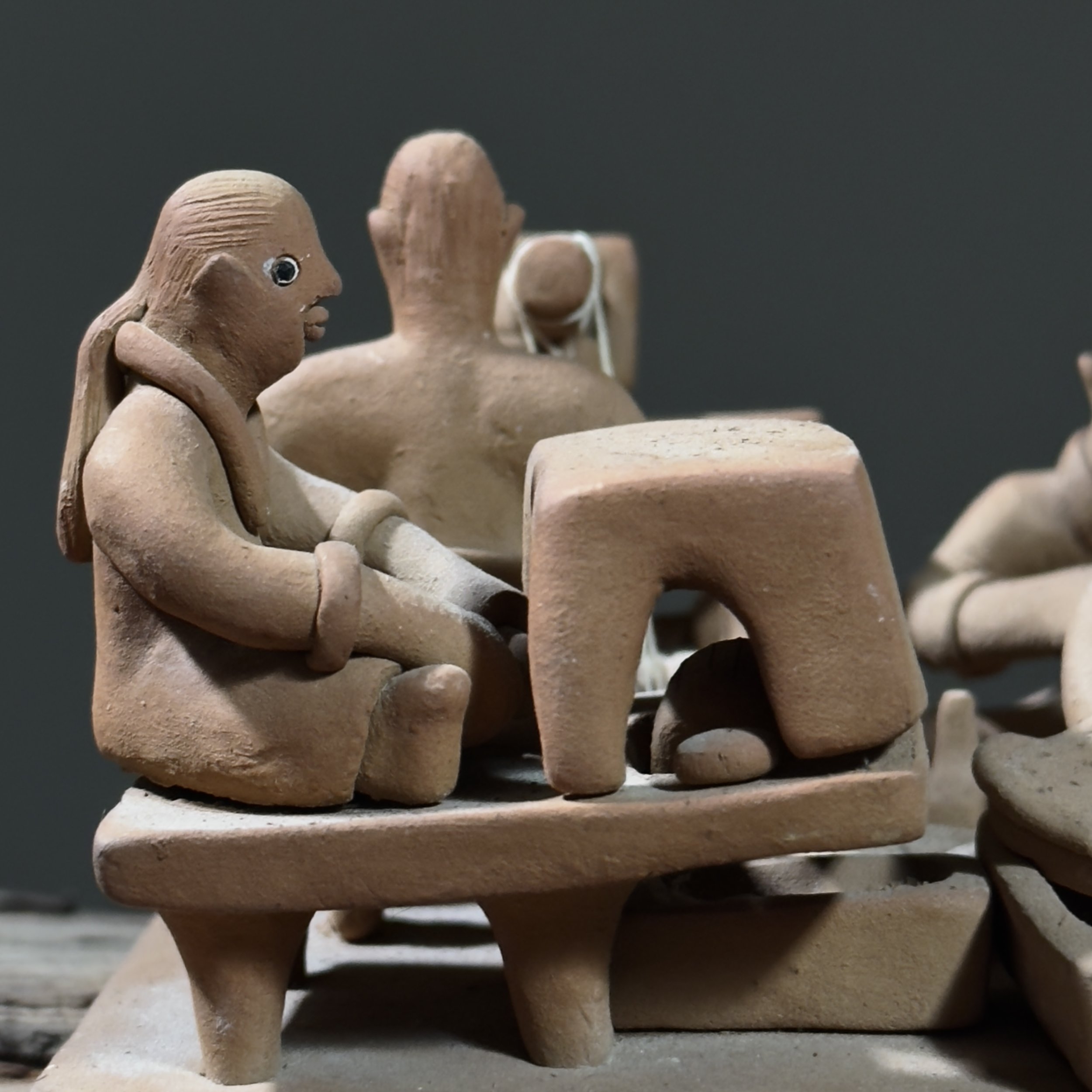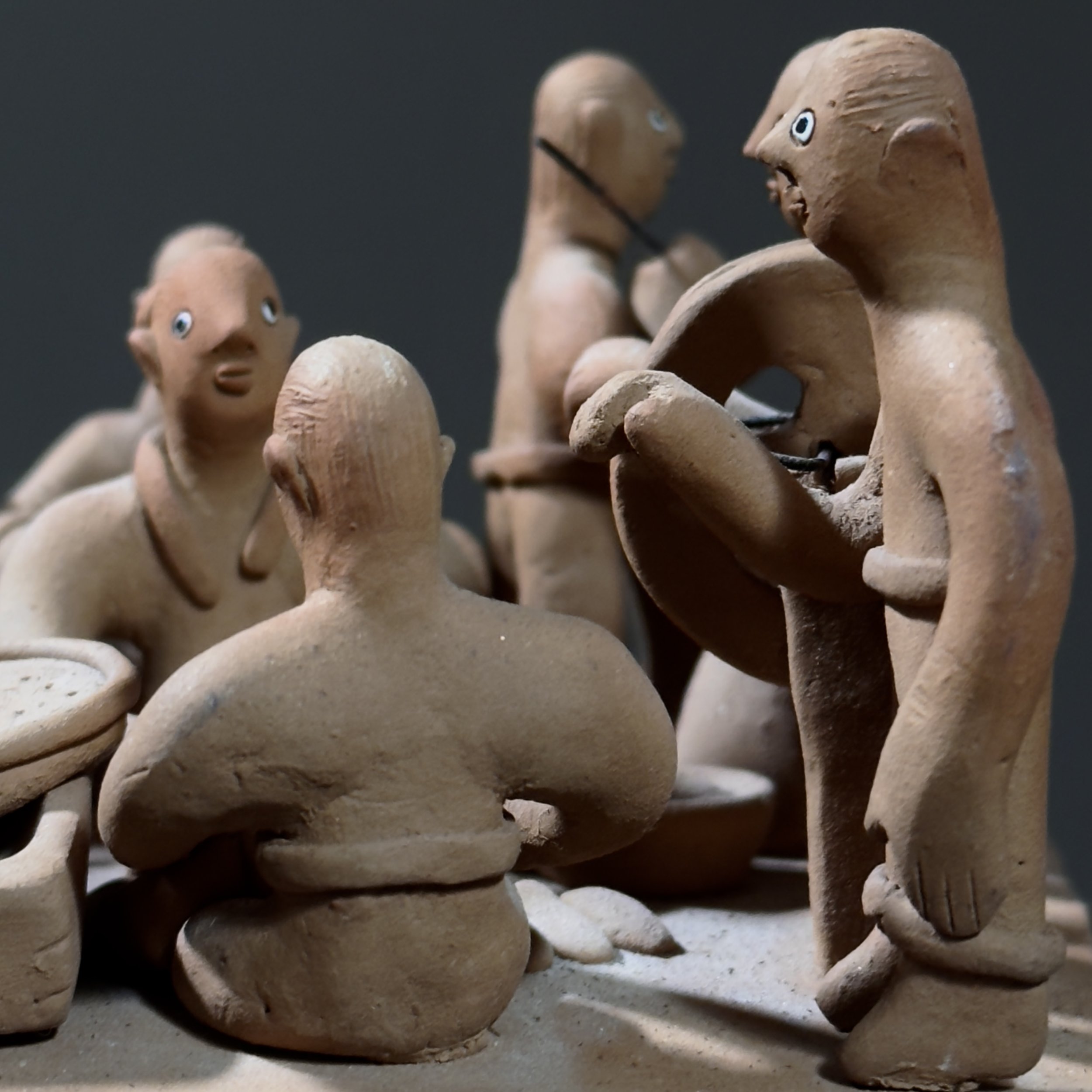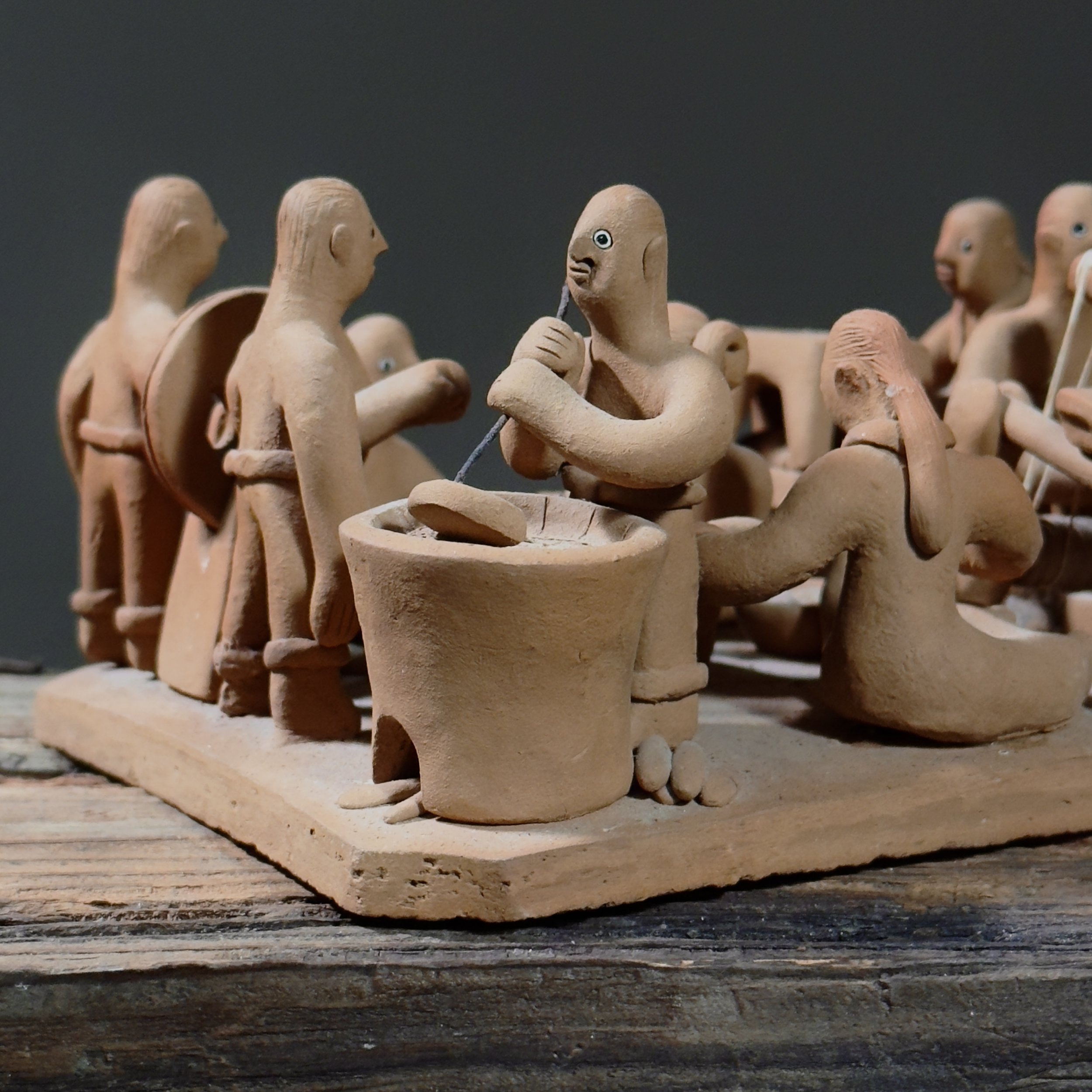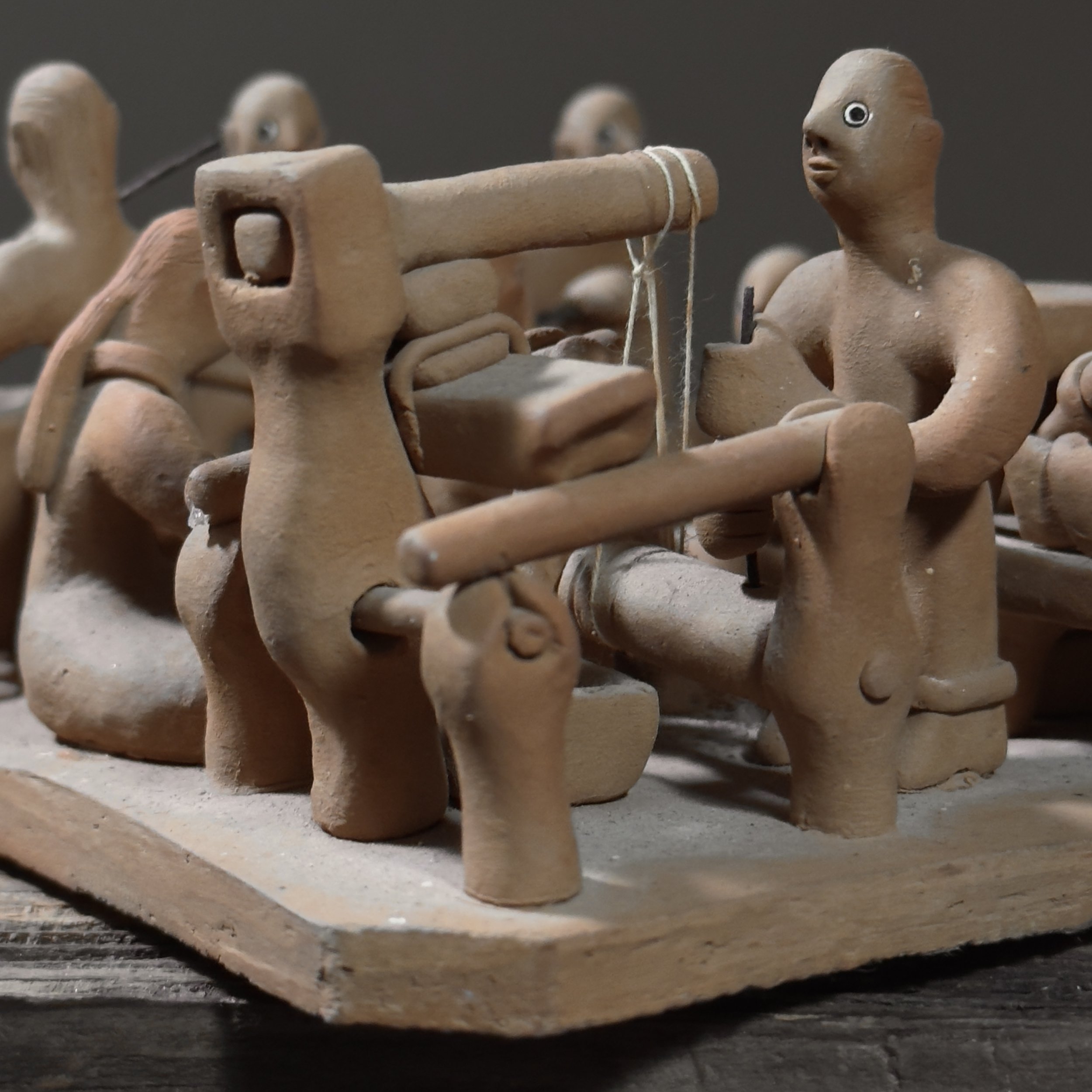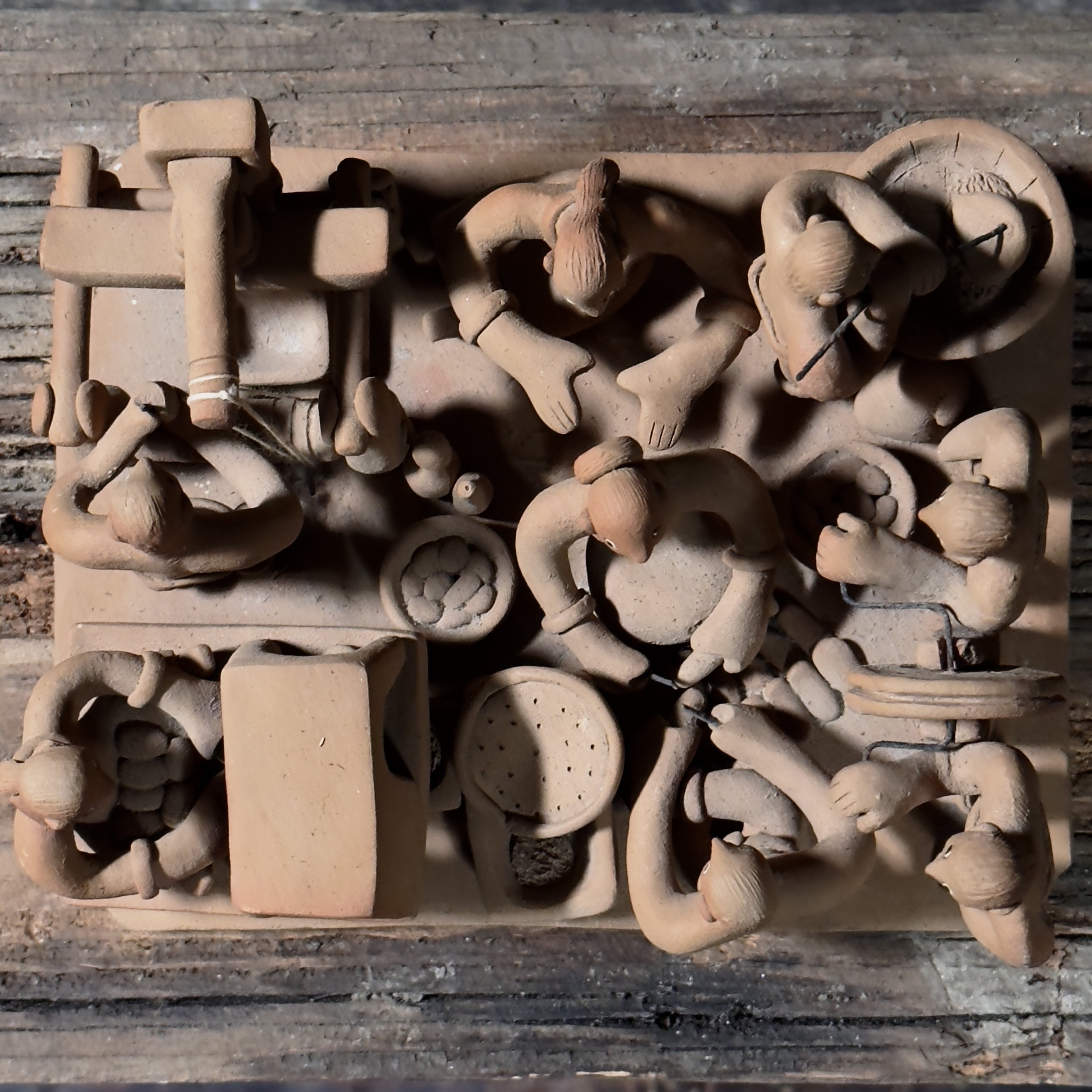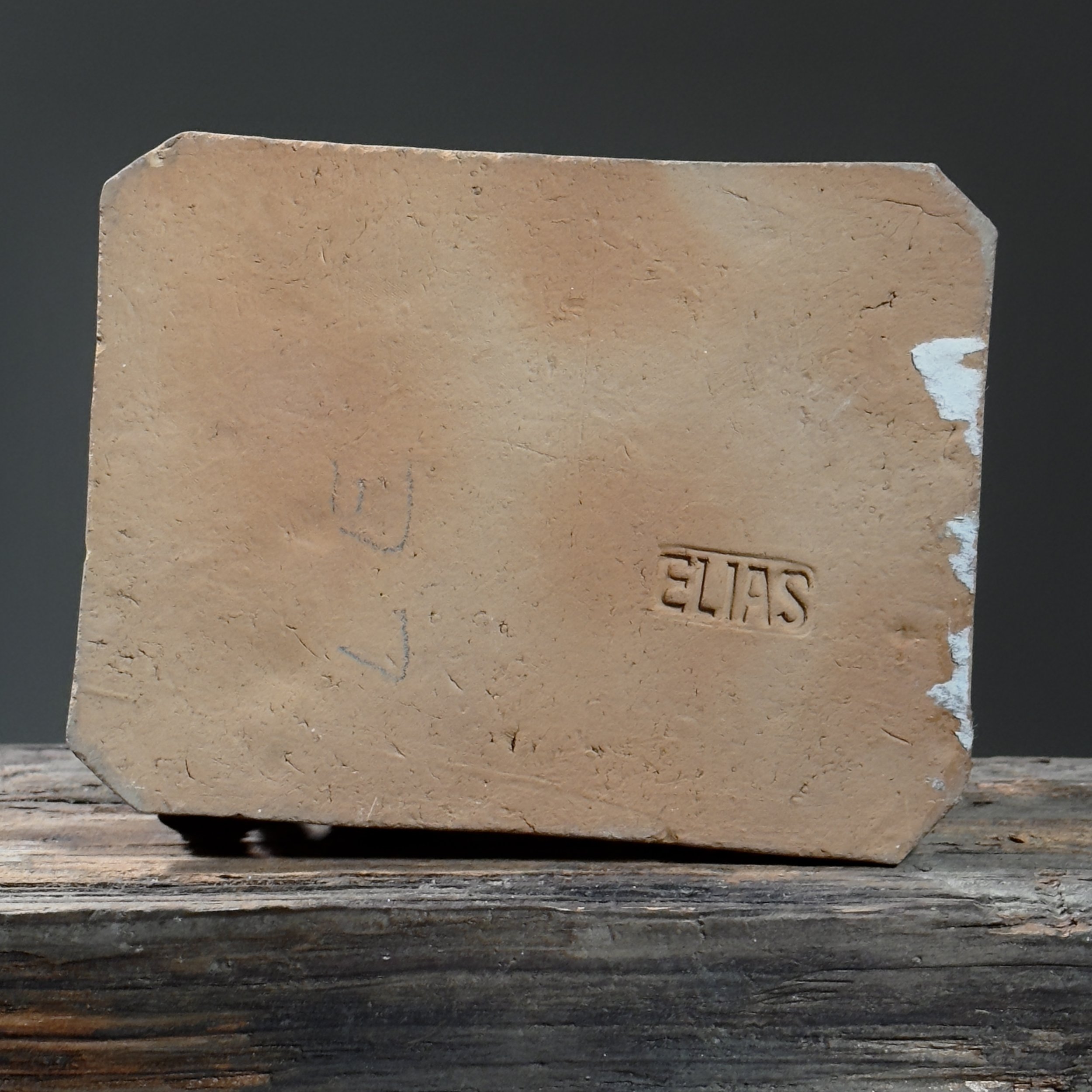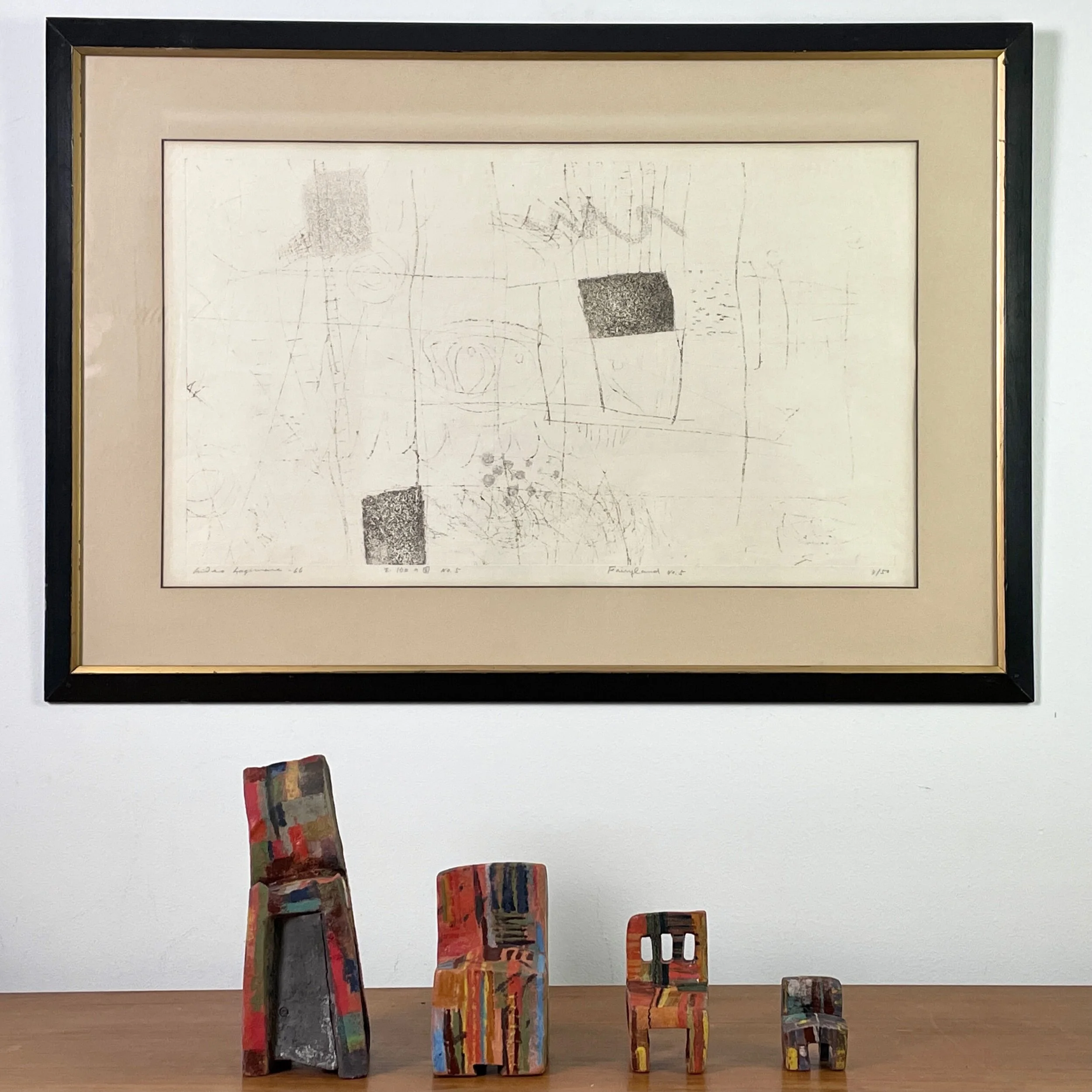 Image 1 of 7
Image 1 of 7

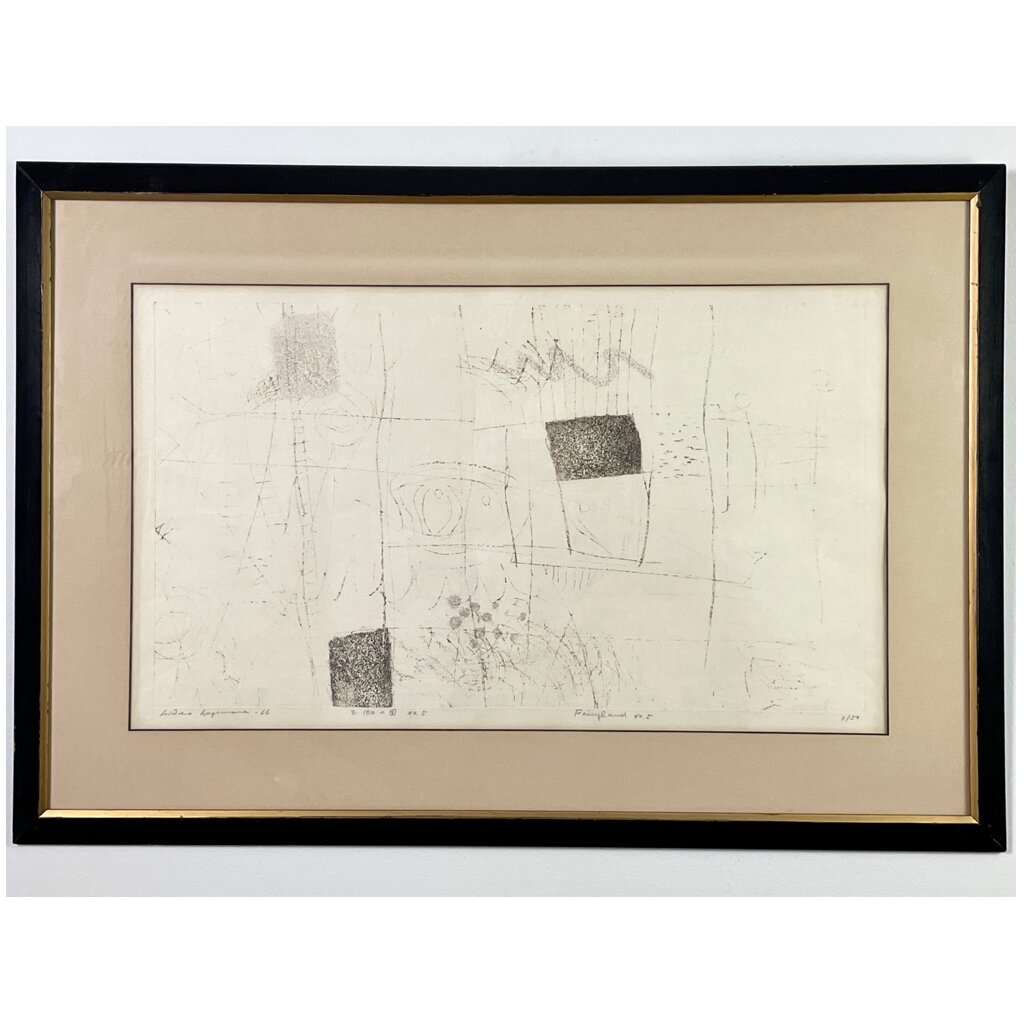 Image 2 of 7
Image 2 of 7

 Image 3 of 7
Image 3 of 7

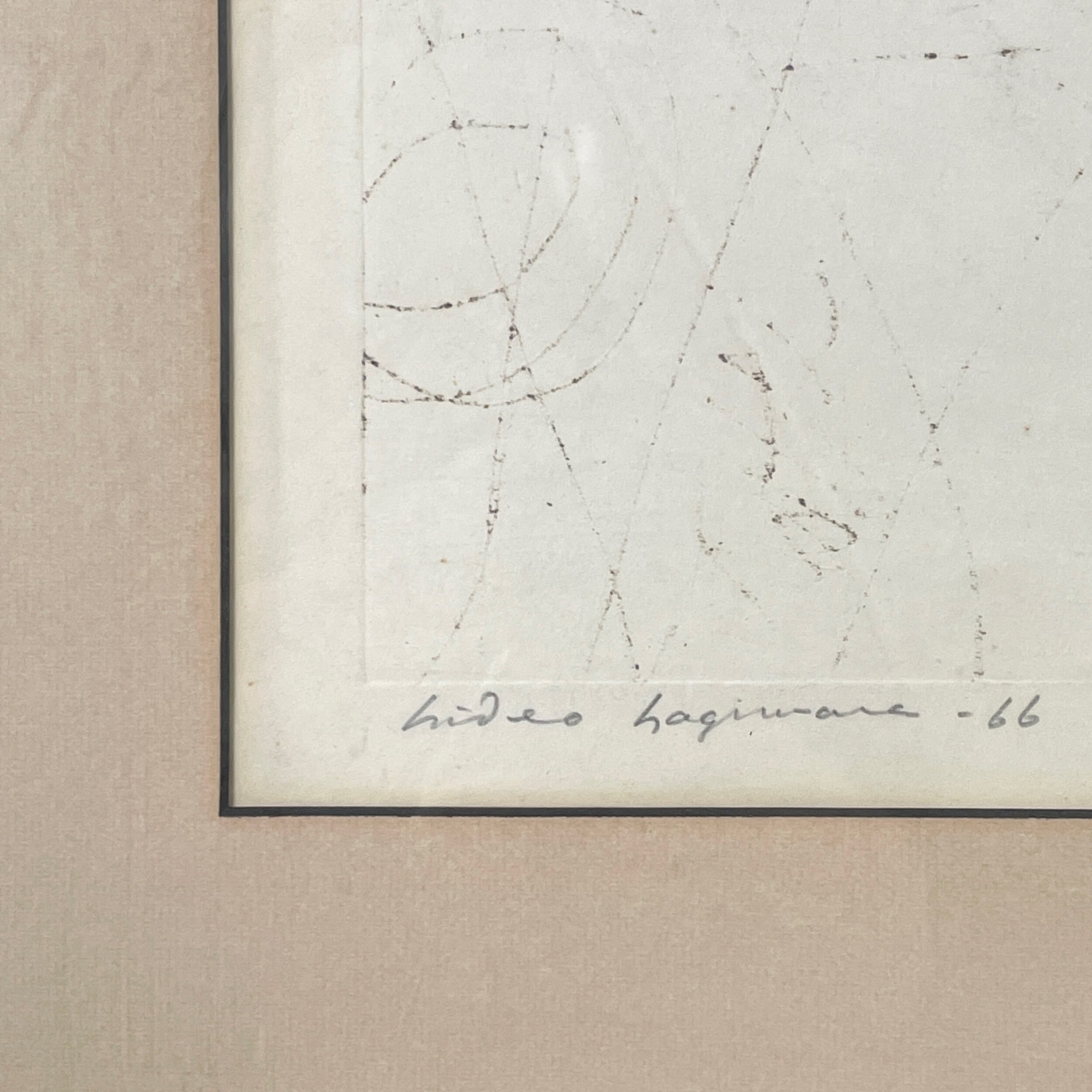 Image 4 of 7
Image 4 of 7

 Image 5 of 7
Image 5 of 7

 Image 6 of 7
Image 6 of 7

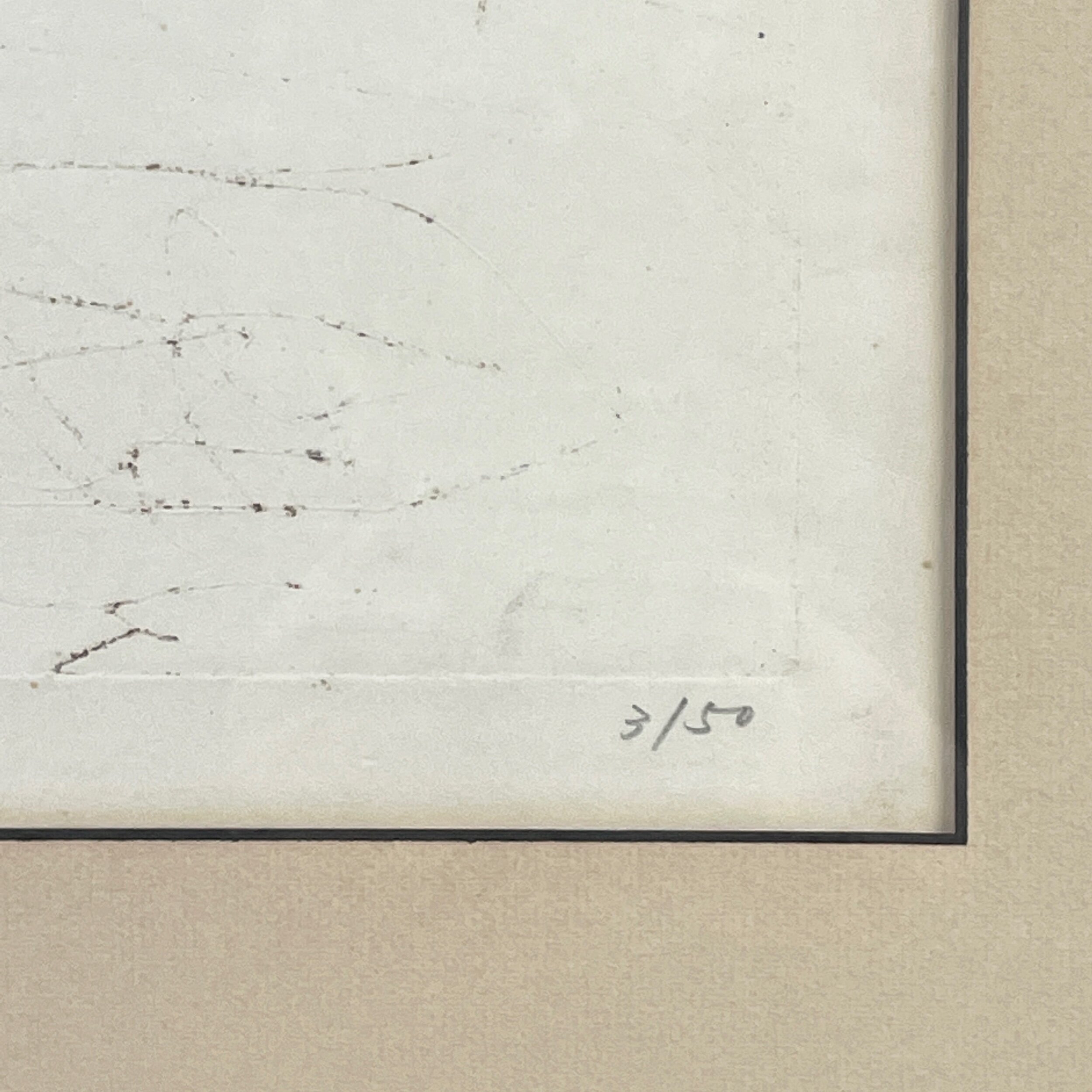 Image 7 of 7
Image 7 of 7








Hideo Hagiwara (Japanese, 1913-2007) - Fairyland No. 5 Woodblock Print (1966, Signed)
Hideo Hagiwara (Japanese, 1913-2007) - Fairyland No. 5 Woodblock Print (1966, Signed). Matted and housed under glass in a black frame with a gold inset trim. Signed, titled, and numbered (#3/50) on the bottom. Condition: in good condition (not inspected out of the frame). Slight yellowing along the edges near the matte. Some fading in the matte and wear along the edge of the frame (conducive with age).
Size: 39.5”W x 27”H
Hagiwara was born in Kofu City, Yamanashi Prefecture. From 1921 he was educated in Japanese schools in Korea and Manchuria. He returned to Japan alone in 1929 to continue his education in Tokyo and first learned oil-painting in 1930, having a work accepted at the Hakujitsu-kai (a society of former expatriate artists) as early as 1932. That year he entered the Bunka Gakuin, Fine Art Section, and in 1933 the Oil Painting Section of the Tokyo School of Fine Arts, from which he graduated in 1938. While still there, he attended Hiratsuka Un'ichi's extracurricular woodblock printing course, and as a result joined the Takamizawa Woodblock Print Company in 1938 as a quality controller, where he learned much about 'Ukiyo-e' print techniques. He was conscripted in 1943 into the army, where his health was so badly affected that he was bedridden for three years from 1945. He had lost his house, atelier and most of his early works in the May 1945 Tokyo air raids, but while sick took up the study of creative woodblock printing. In 1950 he built his own atelier and in 1951 had his first one-man exhibition of oil-paintings. His first one-man exhibition of prints was in 1956 at the Yoseido Gallery, Tokyo, and the same year a print was accepted for the Japanese Print Association annual exhibition, where he has exhibited almost every year since. In 1958 he began to produce the abstract prints which made his international reputation; from that year he began also to exhibit abroad, including the paintings which he had never entirely abandoned. His 'Stone Flower' series was shown in part at the second International Tokyo Print Biennale in 1960 and brought him much recognition. This was enhanced by the 'Man in Armour' series (1962-4). In 1967 he taught briefly as an invited Professor at the University of Oregon; in 1977 he became a lecturer at the Tokyo University of Fine Arts and Music. In 1979 he became Chairman of the Japanese Print Association, a position he held until his death.
Hagiwara was a constant innovator both in technique and style. He developed the system of printing from the back of the paper, scratching into the blocks like etching, composing the blocks from cut-up pieces, and was able in his 'Clown' and 'Theatre' series to simulate lithographic effects in pure woodblock. He has ventured occasionally into figurative subjects, for example, 'Greek Mythology' (1965) and landscape ('Thirty-Six Views of Fuji', 1981), and shown an aliveness to foreign influences without ever being deflected for long by them from the serious abstract prints which he has continued to produce, their tones becoming more sombre as he has grown older. He is now identifiable as the dominant figure in Japanese woodblock printing since Munakata's death in 1975
Hideo Hagiwara (Japanese, 1913-2007) - Fairyland No. 5 Woodblock Print (1966, Signed). Matted and housed under glass in a black frame with a gold inset trim. Signed, titled, and numbered (#3/50) on the bottom. Condition: in good condition (not inspected out of the frame). Slight yellowing along the edges near the matte. Some fading in the matte and wear along the edge of the frame (conducive with age).
Size: 39.5”W x 27”H
Hagiwara was born in Kofu City, Yamanashi Prefecture. From 1921 he was educated in Japanese schools in Korea and Manchuria. He returned to Japan alone in 1929 to continue his education in Tokyo and first learned oil-painting in 1930, having a work accepted at the Hakujitsu-kai (a society of former expatriate artists) as early as 1932. That year he entered the Bunka Gakuin, Fine Art Section, and in 1933 the Oil Painting Section of the Tokyo School of Fine Arts, from which he graduated in 1938. While still there, he attended Hiratsuka Un'ichi's extracurricular woodblock printing course, and as a result joined the Takamizawa Woodblock Print Company in 1938 as a quality controller, where he learned much about 'Ukiyo-e' print techniques. He was conscripted in 1943 into the army, where his health was so badly affected that he was bedridden for three years from 1945. He had lost his house, atelier and most of his early works in the May 1945 Tokyo air raids, but while sick took up the study of creative woodblock printing. In 1950 he built his own atelier and in 1951 had his first one-man exhibition of oil-paintings. His first one-man exhibition of prints was in 1956 at the Yoseido Gallery, Tokyo, and the same year a print was accepted for the Japanese Print Association annual exhibition, where he has exhibited almost every year since. In 1958 he began to produce the abstract prints which made his international reputation; from that year he began also to exhibit abroad, including the paintings which he had never entirely abandoned. His 'Stone Flower' series was shown in part at the second International Tokyo Print Biennale in 1960 and brought him much recognition. This was enhanced by the 'Man in Armour' series (1962-4). In 1967 he taught briefly as an invited Professor at the University of Oregon; in 1977 he became a lecturer at the Tokyo University of Fine Arts and Music. In 1979 he became Chairman of the Japanese Print Association, a position he held until his death.
Hagiwara was a constant innovator both in technique and style. He developed the system of printing from the back of the paper, scratching into the blocks like etching, composing the blocks from cut-up pieces, and was able in his 'Clown' and 'Theatre' series to simulate lithographic effects in pure woodblock. He has ventured occasionally into figurative subjects, for example, 'Greek Mythology' (1965) and landscape ('Thirty-Six Views of Fuji', 1981), and shown an aliveness to foreign influences without ever being deflected for long by them from the serious abstract prints which he has continued to produce, their tones becoming more sombre as he has grown older. He is now identifiable as the dominant figure in Japanese woodblock printing since Munakata's death in 1975
Hideo Hagiwara (Japanese, 1913-2007) - Fairyland No. 5 Woodblock Print (1966, Signed). Matted and housed under glass in a black frame with a gold inset trim. Signed, titled, and numbered (#3/50) on the bottom. Condition: in good condition (not inspected out of the frame). Slight yellowing along the edges near the matte. Some fading in the matte and wear along the edge of the frame (conducive with age).
Size: 39.5”W x 27”H
Hagiwara was born in Kofu City, Yamanashi Prefecture. From 1921 he was educated in Japanese schools in Korea and Manchuria. He returned to Japan alone in 1929 to continue his education in Tokyo and first learned oil-painting in 1930, having a work accepted at the Hakujitsu-kai (a society of former expatriate artists) as early as 1932. That year he entered the Bunka Gakuin, Fine Art Section, and in 1933 the Oil Painting Section of the Tokyo School of Fine Arts, from which he graduated in 1938. While still there, he attended Hiratsuka Un'ichi's extracurricular woodblock printing course, and as a result joined the Takamizawa Woodblock Print Company in 1938 as a quality controller, where he learned much about 'Ukiyo-e' print techniques. He was conscripted in 1943 into the army, where his health was so badly affected that he was bedridden for three years from 1945. He had lost his house, atelier and most of his early works in the May 1945 Tokyo air raids, but while sick took up the study of creative woodblock printing. In 1950 he built his own atelier and in 1951 had his first one-man exhibition of oil-paintings. His first one-man exhibition of prints was in 1956 at the Yoseido Gallery, Tokyo, and the same year a print was accepted for the Japanese Print Association annual exhibition, where he has exhibited almost every year since. In 1958 he began to produce the abstract prints which made his international reputation; from that year he began also to exhibit abroad, including the paintings which he had never entirely abandoned. His 'Stone Flower' series was shown in part at the second International Tokyo Print Biennale in 1960 and brought him much recognition. This was enhanced by the 'Man in Armour' series (1962-4). In 1967 he taught briefly as an invited Professor at the University of Oregon; in 1977 he became a lecturer at the Tokyo University of Fine Arts and Music. In 1979 he became Chairman of the Japanese Print Association, a position he held until his death.
Hagiwara was a constant innovator both in technique and style. He developed the system of printing from the back of the paper, scratching into the blocks like etching, composing the blocks from cut-up pieces, and was able in his 'Clown' and 'Theatre' series to simulate lithographic effects in pure woodblock. He has ventured occasionally into figurative subjects, for example, 'Greek Mythology' (1965) and landscape ('Thirty-Six Views of Fuji', 1981), and shown an aliveness to foreign influences without ever being deflected for long by them from the serious abstract prints which he has continued to produce, their tones becoming more sombre as he has grown older. He is now identifiable as the dominant figure in Japanese woodblock printing since Munakata's death in 1975

